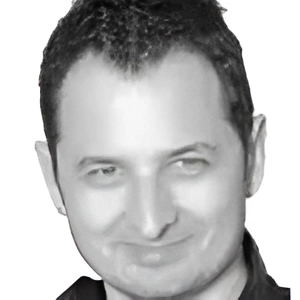As technology becomes more sophisticated, new forms of art are born that were previously impossible. In fact, the emergence of art forms like video mapping can be considered not just a new way to skin a cat but an illustration of an entirely new philosophical possibility. Video mapping plays with physical objects of our everyday reality and suggests that perhaps even you and I could be nothing more than sophisticated projections by advanced technologies (people from the future? aliens? “divine” beings?) Saying that maybe you are a hologram is no longer just funny talk from over-intellectualized wit-slingers but a thought with some real substance behind it. Time will tell, but soon enough you might just have to start wondering if all the people who appear to inhabit your world are actually there.
So what is video mapping? Many have probably seen the viral hit of projections telling the history of the Prague Astronomical Clock Tower in Old Town Square on its 600th anniversary.
The 600 Years from the macula on Vimeo.
The way this technique works requires a number of preferably powerful projectors to project images onto any desired surface. The surface can be anything, from a building to a small box to a person. For the images to be what you want and to hit exactly the areas you prefer, this object first needs to be mapped into a computer. This is accomplished by taking a photo of the object (let’s say a building) from the exact position of the projector, scanning the picture in and creating “masks” in Photoshop or similar programs of the areas you’d like to play with. The actual manipulation is then accomplished in another special computer program, which at this point can even be loaded onto an iPad.
All this sounds fairly “techy” and it kind of is. It’s also fairly expensive as nice projectors are not cheap, although they have been getting cheaper and cheaper. It would help to get a sponsoring company if you want to attempt some very involved mapping feats. Here are some more inspiring examples of what you can do:
Mapping onto a mannequin (but imagine an actual person, perhaps once mapping can be done in 3D):
Video mapping has so far been employed to wow crowds at large art events, like museum openings or concerts, but is spreading commercially to nightclubs, bars, restaurants and any company where a bit of wow factor is appreciated. Besides the cost, another obvious limitation to this technique is that it requires darkness. Whether that can be overcome with stronger projectors remains to be seen, but the possibilities of utilizing mapping are already quite wide and the imaginary possibilities are, in fact, endless. Think a phantom battalion of soldiers who stress out an enemy without actually being there or transforming your apartment into wherever you’d like to live in that day – http://vimeo.com/18460233. This will work better once you don’t have to face a bright projector light coming from one of the walls.
The inevitable migration onto an iPad:
We spoke with Ladi Kolský, one of the pioneers of video mapping in the Czech Republic, who’s had his own ideas on what you can do with such power. He’s been working in the field since 2004, when the cost of projectors was 10 times more expensive than today. To Ladi, video mapping is definitely an art production. He says that “people without art skills will never be able to imagine what needs to be done” while at the same time the work always involves “a lot of improvisation and luck”.
Ladi’s interest in video mapping came from running a media agency and having to promote festivals. He was interested in using the technique for marketing since a new product like this allows more possibilities to offer to clients. He found mapping a good complement to the whole presentations he was creating.
Despite the inherent costs, Ladi feels that video mapping is a fairly democratic art form and can be done by anyone with access to a good projector. He thinks that you can’t learn the technology required at school as the innovations come too fast and “everything you read in a university is gone the same day the book is printed”. Of course, it still stands to reason that many of the skills could be studied at an institution like Prague College, which offers Experimental Media and Interactive Media programs.
While a number of media companies in the Czech Republic have found international fame doing video mapping work (like The Macula which created the clock tower extravaganza), Ladi thinks that at this time there is more opportunity abroad. The issue is the bureaucracy that springs into action whenever a public project is attempted (like mapping onto buildings) and foreign clients tend to pay more. Perhaps for this reason, Ladi joked that some fun projects would be to video map huge fires onto the Czech National Gallery or government buildings.
Some other pertinent mapping links:
A very good step-by-step tutorial, in case you want to attempt this one your own:
http://videomapping.org/?page_id=42
The software you’ll need:
http://www.modul8.ch
http://www.madmapper.com
Site for the 1st video mapping competition taking place in Paris this October – http://www.vlsvideomappingtrophy.com/
Related articles












 Reading time: 4 minutes
Reading time: 4 minutes 






















